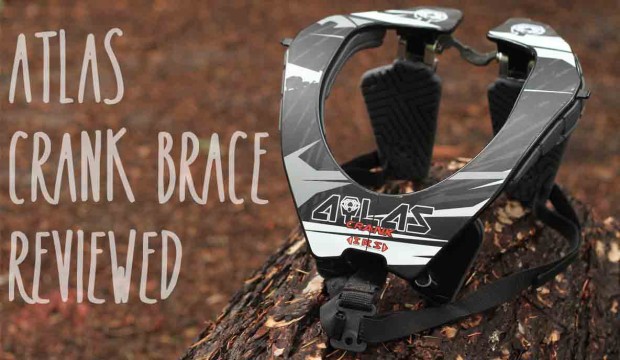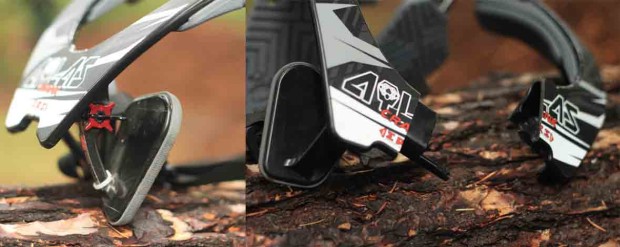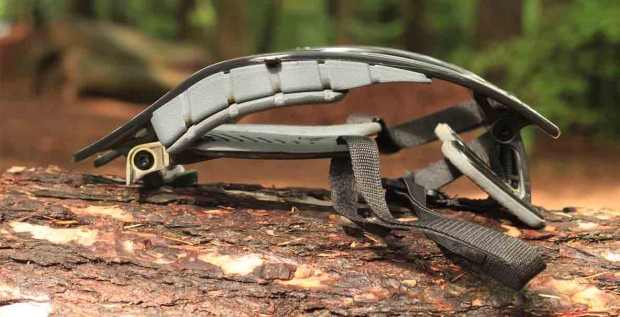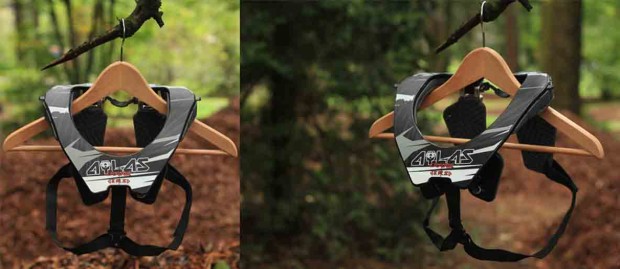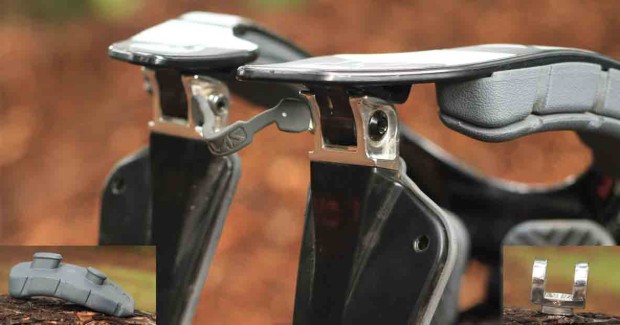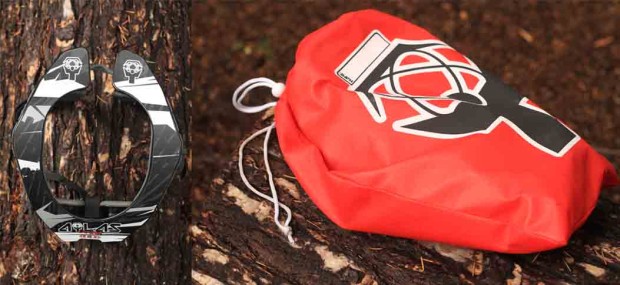Purpose:
The Atlas Crank neck brace could save your life. Along with Leatt, Aplinestars and a few other manufactures, Atlas makes protective braces with one purpose: to protect your neck from possible injury. These braces are used in downhill, freeride, all mountain and dirt jump bicycle disciplines as well as in motocross. The idea is to prevent the user’s head and helmet from allowing the neck into a positions where it could be broken or injured. Along with a helmet and knee protection, neck braces are one of the most important pieces of protective equipment in mountain biking.
Before purchasing a neck brace, it is important to understand that they may pose risk to alternate injury in the case of a crash. Read more about the Atlas Testing Procedure here and remember that neck braces are not the answer to injury free mountain biking but only one option.
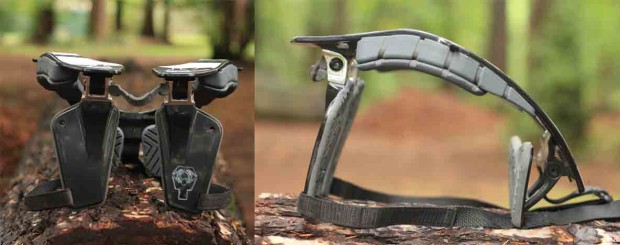
Figure A: Rubber padding and a rubber bridge make up the soft components of the brace.
Materials and Procedure:
The Atlas Crank neck brace was tested by various mountain bikers in both the Whistler Mountain Bike Park and on Vancouver’s North Shore. Both technical trails and flow trains were ridden during testing. The brace was worn in both wet and dry weather conditions. The brace was compared with Leatt’s DBX Comp brace known to be one of the most popular on the market. Over ten days of riding meant the brace was well studied and used.
Figure B: The Emergency Removal System allows easy removal in an emergency.
Data:
- Three sizes: Small, Medium, and Large determined on chest size.
- Two strapping systems: cross straps and around the chest strap.
- Four back support positions
- Three height adjustments
- Two sizes of shoulder pads included with each brace
- Two sizes of aluminum back support hardware included with each brace
- MSRP $329.99
Figure C: The brace folds nicely for storage and packing while on trips.
Observations:
Out of the box, Atlas presented itself well with quality packaging, including multiple hardware(Figure E) and padding options to make for optimal fit as well as two strapping systems. The first thing you will notice is that unlike the Leatt braces, the Atlas does not use any fabric or foam. Instead, the shoulders and, chest and back supports are padded with a soft, yet durable, rubber(Figure F) while the rest of the brace is made of a strong hard plastic.
The Atlas brace is unlike many others as it does not utilize a clasp system on the side which openes to take the bace on or off. Instead the brace uses a rubber bridge strap(Figure A) and the brace is pulled over the head while the bridge strap is stretched. This allows for a more dynamic fit as the brace can flex and stretch if needed. Putting on the brace is quick and easy. The brace took less than 10 minutes to set up and we were ready to ride.
Figure D: The chest straps help to hold the brace down and tight to the body.
Being a single piece assembly, the Atlas Crank neck brace uses a Emergency Removal System(Figure B) which is a simple system on the front of the brace which can be used in the time of an emergency to open and remove the brace.
During riding, the brace feels light and holds to the body well. The rubber padding grips the riders jersey well and keeps the brace from moving while the split back design allows the brace to move with your body. When sitting on the chair or standing straight up, the brace seemed to make more contact with the helmet than what we hoped for, but this concern was gone when we sat on the bike and rode in our regular riding position.
Figure E: Additional padding and hardware options allow for optimal adjustments to fit.
We opted to use the chest strap system(Figure D) as it seemed most comfortable and easy to use. It seemed easily adjustable and the velcro held well and never came undone.
The full rubber/plastic construction of the brace lead to be very intuitive as it doesn’t absorb any water or dirt and is very easily cleaned. After over 10 days riding all types of conditions, the brace still looks close to new.
The only issue we seemed to find was that when the brace did come in contact with the helmet, the hard plastic gave off a loud thunk as expected. This is due to having no soft components on the top side of the main collar. Though it is likely preventable with a small patch of rubber along the back and front rims, it isn’t 100% necessary for the very limited times this occurred.
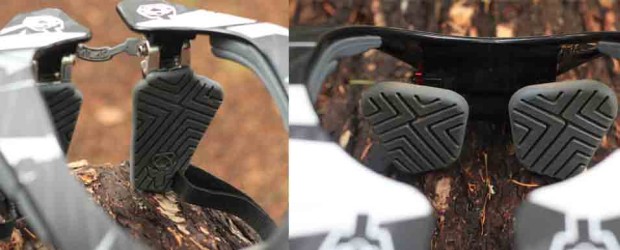
Conclusion:
After a long term testing period, the Atlas Crank neck brace proves to be a strong contender in the neck brace market with many features which sets it apart from other brands. Plainly put, the Atlas Crank makes sense and doesn’t have any unnecessary features. We found ourselves reaching for the Atlas almost every day when given the choice due to it’s simplicity and comfort. From the average freerider to the high performance downhiller, the Atlas Crank neck brace will provide the type of protection and comfort needed for by all riders. At an affordable price of $329.99, a wide range of adjustability for each rider, and clean, strong build quality, there isn’t a reason not to grab for the Atlas Crank.
Atlas braces also feature a nice storage bag when not in use.
Visit the Atlas Brace Technologies website to learn more about their products.
